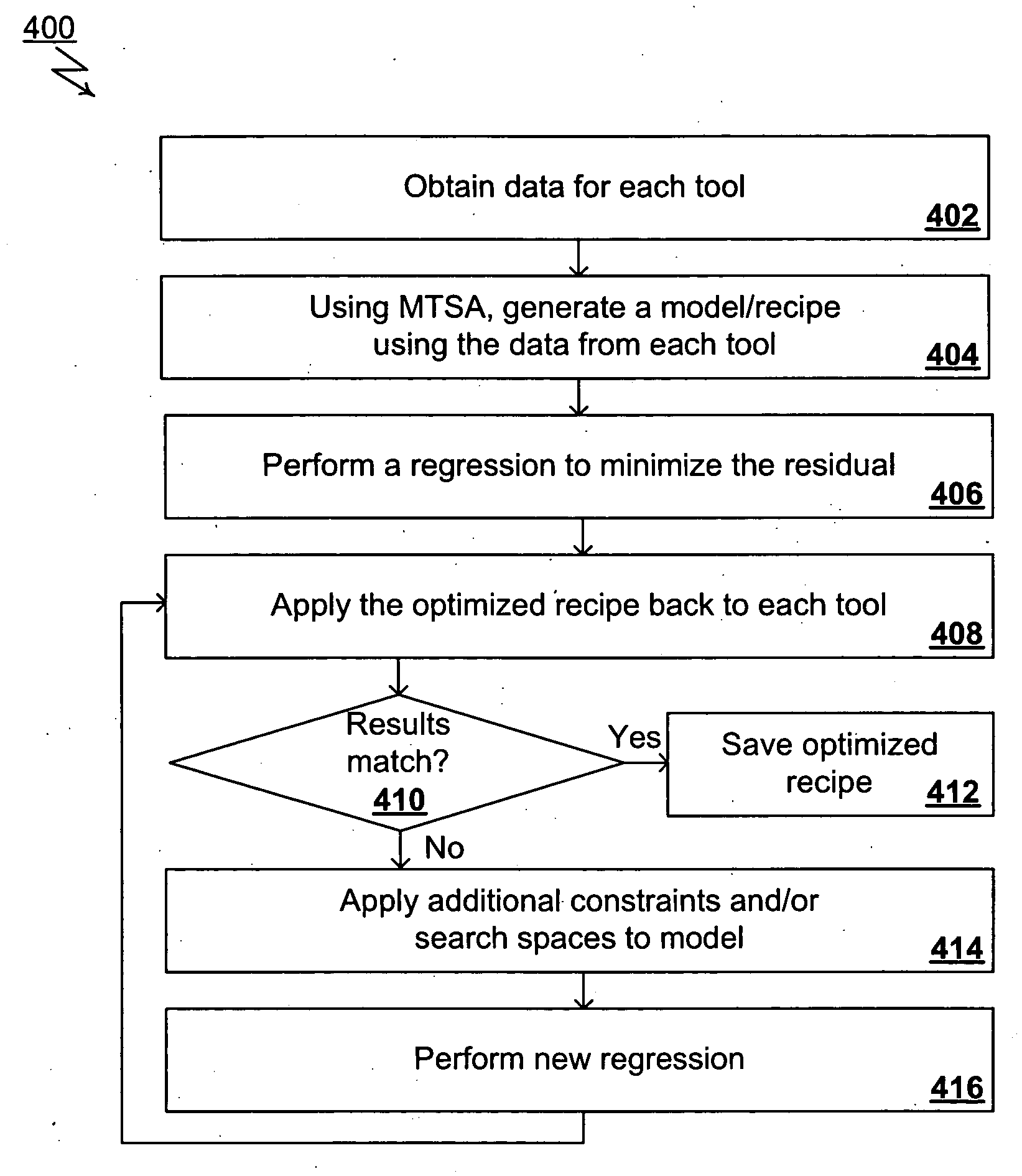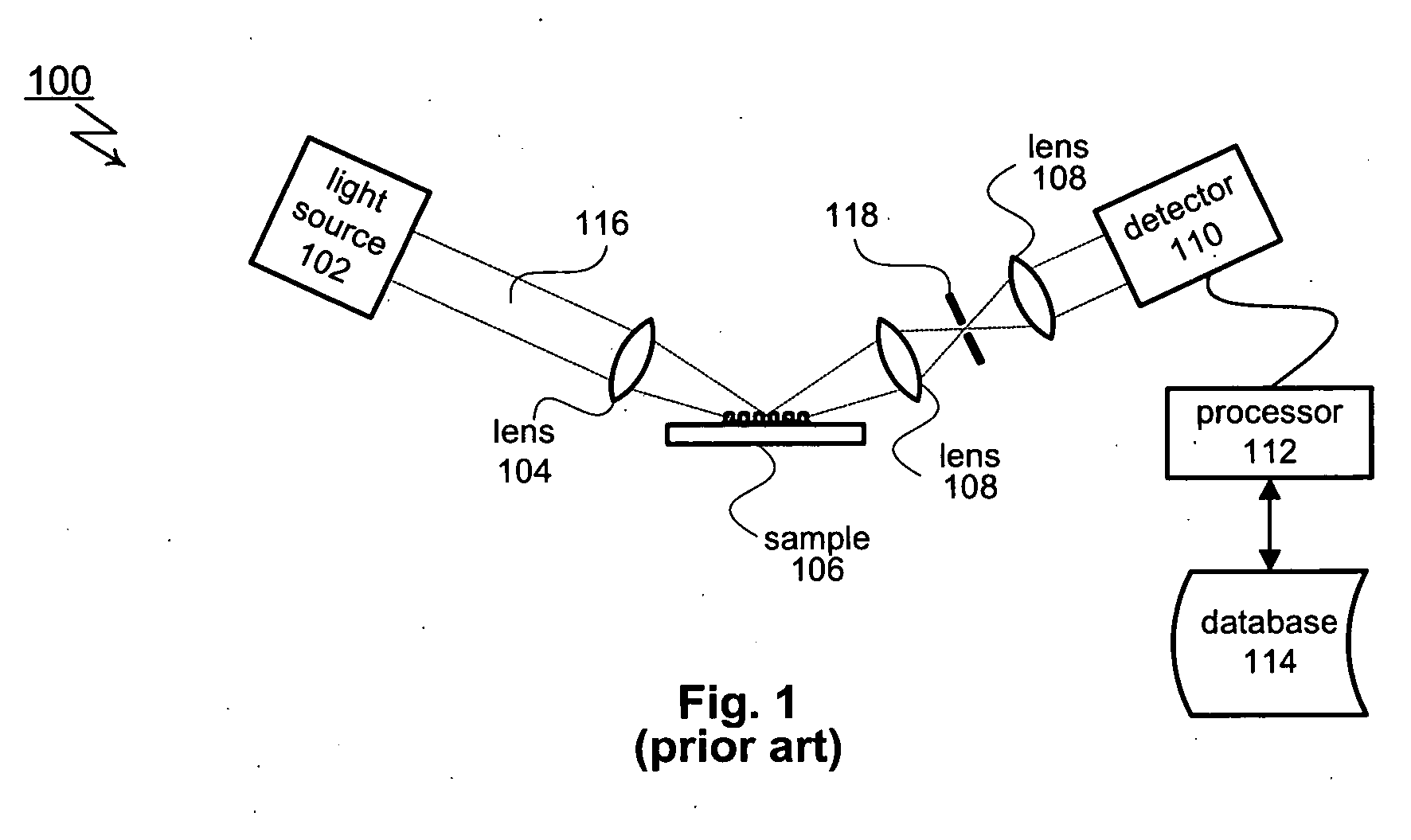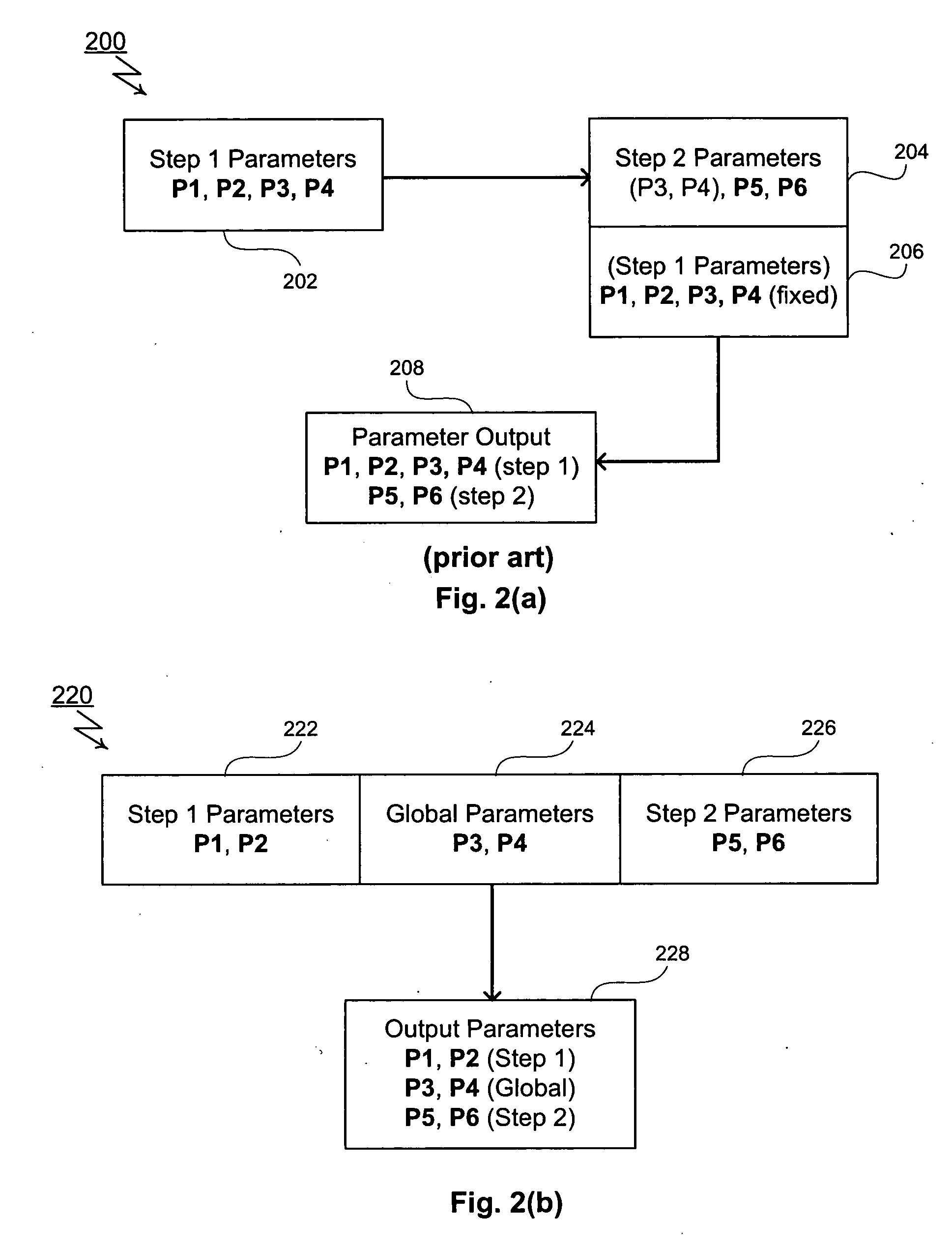Multiple tool and structure analysis
a multi-tool and structure analysis technology, applied in adaptive control, process and machine control, instruments, etc., can solve the problems of complex evaluation of these theoretical metrology models, inability to associate a correct set of theoretical parameters with data measured using these devices, and high computational cos
- Summary
- Abstract
- Description
- Claims
- Application Information
AI Technical Summary
Problems solved by technology
Method used
Image
Examples
Embodiment Construction
[0016] Systems and methods in accordance with various embodiments of the present invention can overcome these and other deficiencies in existing approaches to rapidly evaluating multiple data sets, such as sets of optical metrology data, by changing the way in which the data is processed. Multiple Tool and Structure Analysis (MTSA) refers to a parallel regression analysis engine, allowing for the parallel or concurrent application of non-linear regression methodology to multiple data sets, wherein at least one common parameter is coupled during the regressions. MTSA can be an extension of regression algorithms used to process data sets separately, such as algorithms described in U.S. Pat. No. 6,532,076, which is hereby incorporated herein by reference. MTSA can be used in a single structure, multiple-tool version to optimize calculated optical constants, thereby reducing system related errors. These optimized parameters then can later be used to obtain better tool matching performan...
PUM
 Login to View More
Login to View More Abstract
Description
Claims
Application Information
 Login to View More
Login to View More - R&D
- Intellectual Property
- Life Sciences
- Materials
- Tech Scout
- Unparalleled Data Quality
- Higher Quality Content
- 60% Fewer Hallucinations
Browse by: Latest US Patents, China's latest patents, Technical Efficacy Thesaurus, Application Domain, Technology Topic, Popular Technical Reports.
© 2025 PatSnap. All rights reserved.Legal|Privacy policy|Modern Slavery Act Transparency Statement|Sitemap|About US| Contact US: help@patsnap.com



